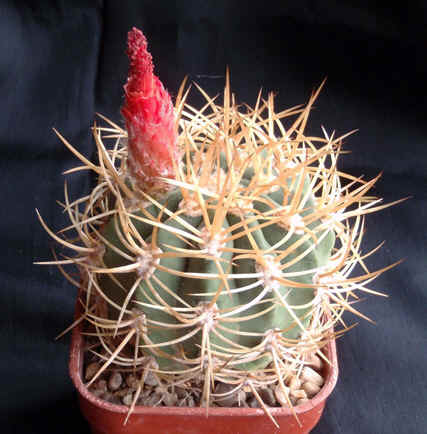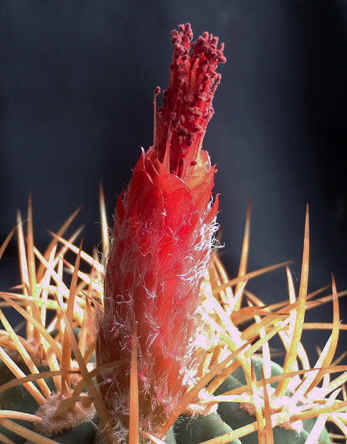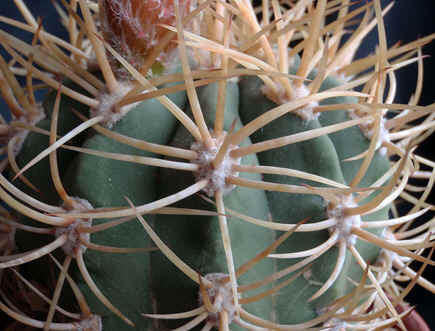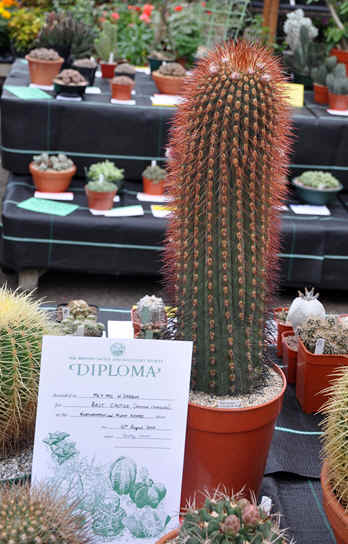During
June I was pleased to see a bud appear for the first time on a plant I
have owned for more than ten years, but to which I had paid scant
attention. It was a Denmoza
rhodacantha
with a collection reference DJF186. I used Ralph Martin’s excellent
on-line database http://ralph.cs.cf.ac.uk/Cacti/
and found that it refers to David J Ferguson and he collected at a site
called ‘Agua del Toro’ in Mendoza, Argentina. David Ferguson is from
Rio Grande Botanical Gardens in New Mexico, USA and he allocates numbers
to collection sites, not to individual species; something to be aware of
if you acquire a plant with a DJF collection number. In fact DJF186 also
covers Pterocactus
decipiens
and Pterocactus
kuntzei.
Many other people have collected plants from the same locality including
Fred Kattermann [Eriosyce]
and Zlatko Janeba [Denmoza,
Pyrrhocactus
& Trichocereus].
The
genus name ‘Denmoza’ is an anagram of the Argentinean province
Mendoza, a happy hunting ground for cactophiles, and the specific epithet
‘rhodacantha’ means red spines. The taxonomy of this plant has been
complex; it started life in 1821 as Cactus
coccinea
nom nud and was described by Salm-Dyck in 1834 as Echinocactus
rhodacanthus.
According to opinions based on the morphology of stems, flowers and seeds
it has been assigned to Cereus,
Cleistocactus, Echinopsis,
Oreocereus
and Pilocereus,
but Britton & Rose erected the genus Denmoza in 1922 a century after
its discovery and this is upheld in the New Cactus Lexicon. It inhabits
mountains west of the Andes in the Argentinian provinces of Mendoza and
Salta at elevations between 2000 & 2800m.

Above:
Roland’s Denmoza
rhodacantha
flowering for the first time.


